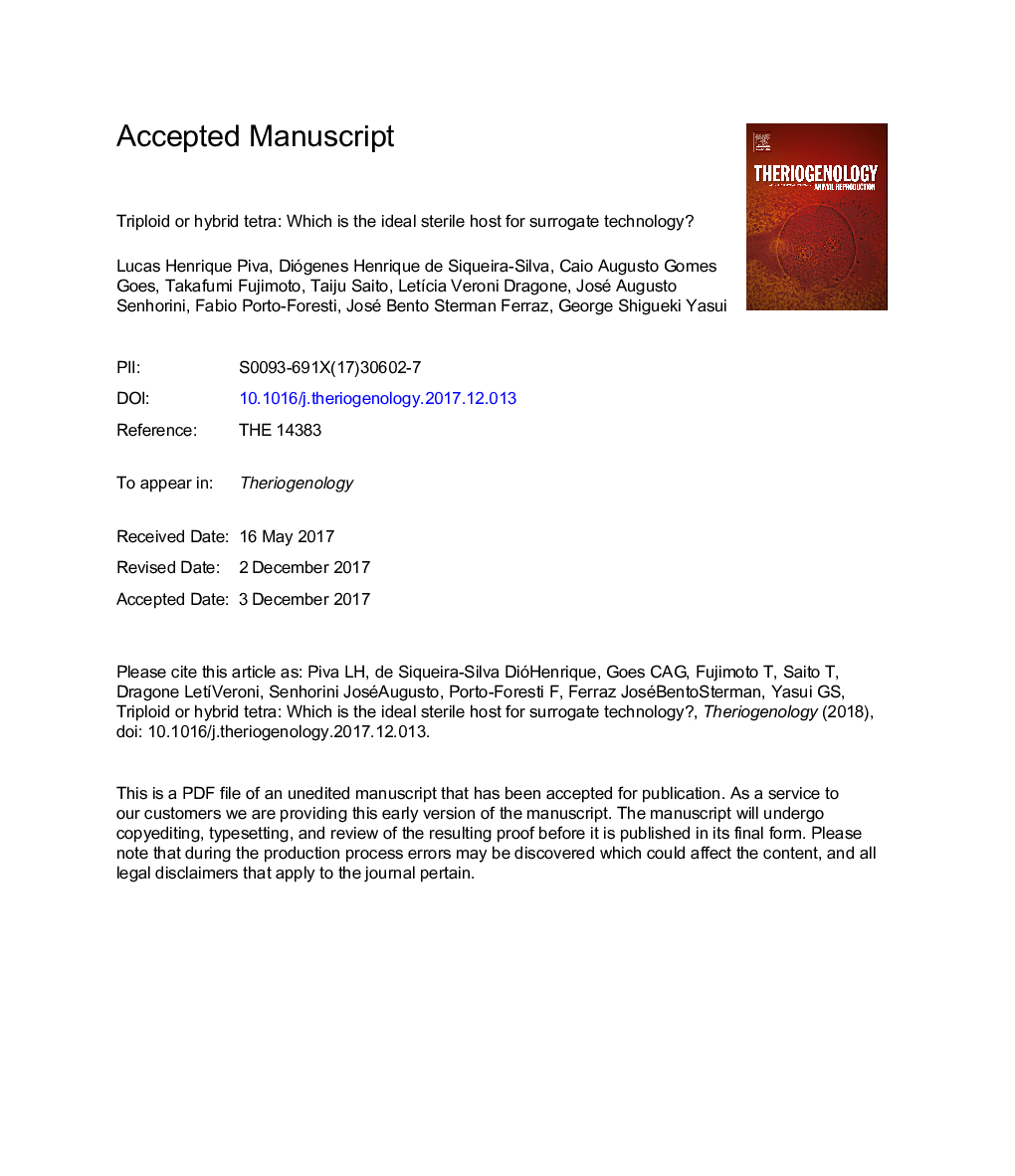| Article ID | Journal | Published Year | Pages | File Type |
|---|---|---|---|---|
| 8427789 | Theriogenology | 2018 | 22 Pages |
Abstract
This work was aimed at developing an effective procedure to obtain sterile ideal host fish in mass scale with no endogenous germ cells in the germinal epithelium, owning permanent stem-cell niches able to be colonized by transplanted germ cells in surrogate technology experiments. Thus, triploids, diploid hybrids, and triploid hybrids were produced. To obtain hybrid offspring, oocytes from a single Astyanax altiparanae female were inseminated by sperm from five males (A. altiparanae, A. fasciatus, A. schubarti, Hyphessobrycon anisitsi, and Oligosarcus pintoi). Triploidization was conducted by inhibition of the second polar body release using heat shock treatment at 40 °C for 2 min. At 9-months of age, the offspring from each crossing was histologically evaluated to access the gonadal status of the fish. Variable morphological characteristics of the gonads were found in the different hybrids offspring: normal gametogenesis, gametogenesis without production of gametes, sterile specimens holding germ cells, and sterile specimens without germ cells, which were considered “ideal hosts”. However, only in the hybrid derived from crossing between A. altiparanae and A. fasciatus, 100% of the individuals were completely sterile. Among them 83.3% of the male did not present germ cells inside germinal epithelium, having only somatic cells in the gonad. The other 16.7% also presented spermatogonia inside the niches. Such a methodology allows the production of sterile host in mass scale, opening new insights for application of surrogate technologies.
Keywords
Related Topics
Life Sciences
Agricultural and Biological Sciences
Animal Science and Zoology
Authors
Lucas Henrique Piva, Diógenes Henrique de Siqueira-Silva, Caio Augusto Gomes Goes, Takafumi Fujimoto, Taiju Saito, LetÃcia Veroni Dragone, José Augusto Senhorini, Fabio Porto-Foresti, José Bento Sterman Ferraz, George Shigueki Yasui,
